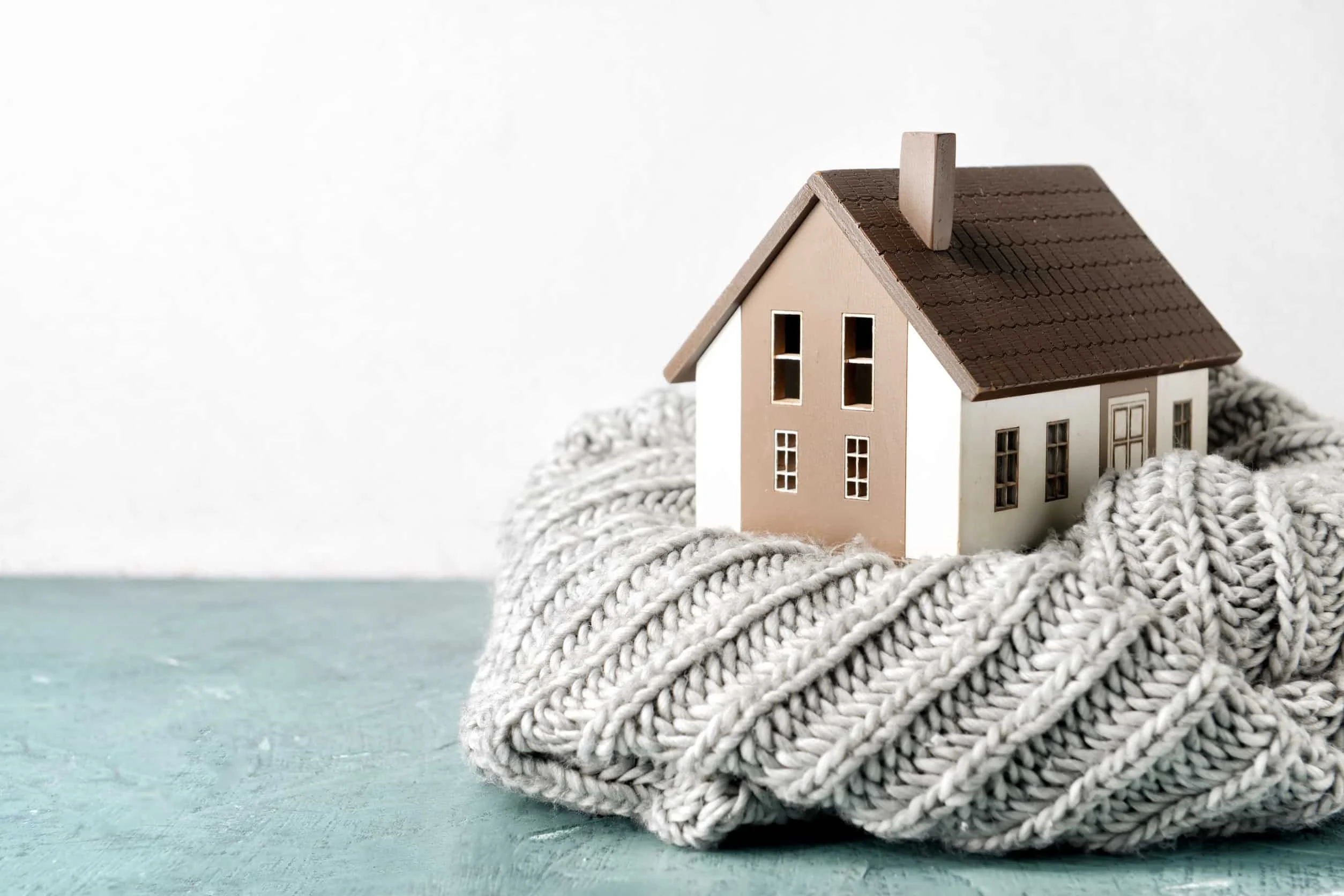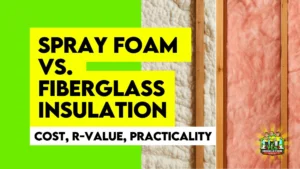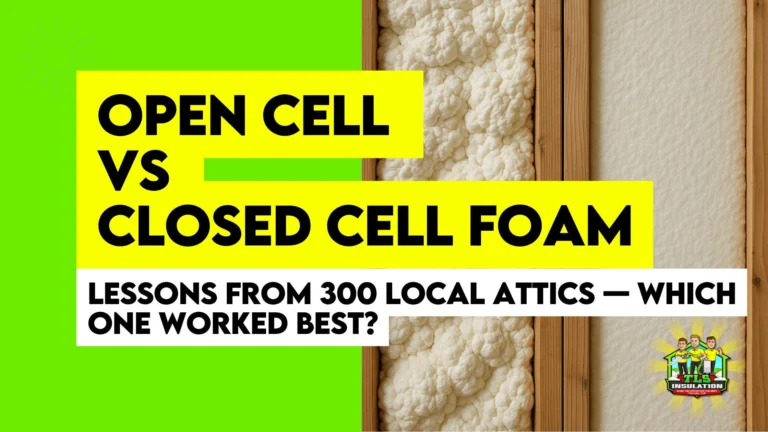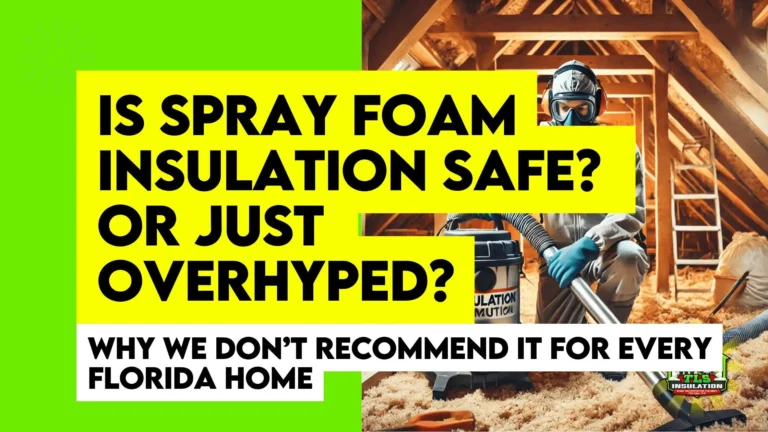Florida’s weather may be known for its sweltering heat, but it’s not all sunshine and warmth. In areas like Pensacola, Tallahassee, and even Jacksonville, winter can bring a surprising chill, while regions such as Miami, Tampa, and Orlando remain warm year-round. Whether you’re facing the scorching sun or a crisp winter morning, proper insulation is key to maintaining comfort and reducing energy costs in any season.
Curious about why insulation is just as important in cold climates as it is in hot climates? How does Insulation work in winters?
During the winter, insulation functions much like a thermal blanket, trapping warmth inside and keeping the cold air out. A good Insulation for cold weather plays a pivotal role in keeping homes cozy during those unexpected cold fronts. But its benefits go beyond winter; even in Florida’s warmer climates, insulation ensures that your home stays cool, reducing the need for constant air conditioning.
By investing in winter insulation, you’re preparing your home for both the heat and the cold, creating year-round comfort and energy efficiency
How to Choose the Best Insulation for Cold Weather
At a glance;
- Spray foam provides superior air sealing
- Fiberglass offers excellent practicality and is cost-effective
- Rigid foam boards are prized for their durability and high R-values per inch
When selecting the best insulation for cold weather, it’s essential to consider factors such as thermal resistance (R-value), moisture resistance, and durability. Insulation types like spray foam, fiberglass, and rigid foam offer unique benefits.
Spray foam provides superior air sealing, making it ideal for preventing cold drafts. Fiberglass offers excellent thermal resistance and is cost-effective, while rigid foam boards are prized for their durability and high R-values per inch.
Each type of insulation works differently depending on the structure of your home, the level of cold resistance needed, and the climate conditions you face. With the right selection, you can ensure optimal energy efficiency and protection against cold temperatures.
Which Insulation Type Is Right for You?
Choosing the best cold weather insulation type for your home depends on your budget, energy efficiency goals, and climate conditions.
For example, For homeowners on a budget, fiberglass insulation offers an affordable and effective solution. On the other hand, spray foam insulation provides superior energy savings and air sealing, making it ideal for areas with extreme cold but it’s highly on the expensive side.
So in short, Every Winter Insulation works differently given the areas you want to insulate, definitely the budget thing, and expectations and goals you set with your decision.
Still Confused About The Right Choice? Call Us For a Free Consultation?
Batt Insulation
- Value for money: Excellent
- Best for: Walls, attics, ceilings
- Cost: Affordable
Batt insulation is a practical and widely used insulation option, offering good thermal resistance at a low cost. Made of fiberglass or mineral wool, it’s easy to install and effective for large spaces like walls and attics. It’s widely available, making it an economical choice
Pros
- Cost-effective and easy to install.
- Non-flammable, improving safety.
Cons
- Lower air sealing compared to other options.
- Can be irritating to skin and lungs during installation.
Blown-in Insulation
- Value for money: High
- Best for: Attics, enclosed spaces
- Cost: Low-Moderate
Blown-in insulation, often made from cellulose or fiberglass, is excellent for retrofitting and filling gaps in attics and tight spaces. Its loose-fill nature allows for even distribution, providing strong resistance against heat loss in colder months.
Pros
- Great for filling irregular spaces.
- Environmentally friendly (cellulose option).
Cons
- Settles over time, reducing effectiveness.
- Requires professional installation for optimal results.
Spray Foam Insulation
- Value for money: High but pricey
- Best for: Sealing cracks, walls, attics
- Cost: Expensive
Spray foam insulation offers the highest R-value per inch, making it one of the best choices for sealing air leaks and preventing cold drafts. It expands to fill even the smallest gaps, improving both energy efficiency and comfort. Its ability to block moisture also helps prevent mold growth, but it is more expensive.
Pros
- Superior air and moisture sealing.
- High R-value, excellent for cold climates.
Cons
- Higher installation costs.
- Potential off-gassing during curing phase.
Rigid Foam Board Insulation
- Value for money: High
- Best for: Foundations, roofs, exterior walls
- Cost: Moderate to expensive
Rigid foam board insulation is perfect for areas requiring durable and moisture-resistant solutions, such as foundations and roofs. It provides a high R-value and is very effective in cold climates. It’s also lightweight and easy to cut, making it versatile for many applications.
Pros
- High R-value, ideal for extreme temperatures.
- Resistant to moisture and pests.
Cons
- Can be difficult to install in tight spaces.
- Expensive compared to fiberglass.
Common Insulation Mistakes to Avoid in Winter
Even with the best insulation for cold weather, certain mistakes can compromise your home’s energy efficiency. Here are the most common pitfalls to avoid when insulating for the winter months.
Ignoring Air Leaks
One of the most critical yet overlooked aspects of winter insulation is air sealing. Even the best insulation will fail to perform if air leaks are not addressed first. According to the U.S. Department of Energy, homes can lose up to 30% of heating through gaps and cracks around windows, doors, and attics. Spray foam insulation is highly effective for sealing these gaps.
- Mistake: Not addressing air leaks before insulation.
- Solution: Use spray foam or caulking to seal all openings before installing insulation.
Using the Wrong R-Value
R-value measures insulation’s thermal resistance—higher values indicate better performance in cold weather. Many homeowners choose insulation without considering their region’s recommended R-value. In Florida’s northern regions, a minimum of R-30 is recommended for attics, while warmer areas can suffice with lower ratings.
- Mistake: Selecting insulation with the wrong R-value for your climate.
- Solution: Always verify the R-value suited for your area and the part of the house you’re insulating.
Overstuffing Insulation
Overpacking insulation, especially in walls and attics, can actually reduce its efficiency. When insulation is compressed, its air-trapping properties are compromised, reducing the R-value and diminishing its ability to prevent heat transfer.
- Mistake: Overstuffing insulation in tight spaces.
- Solution: Ensure insulation is installed to its specified thickness, allowing air to circulate.
Skipping Attic Insulation
Many homeowners focus on wall insulation and forget that attic insulation plays a critical role in preventing heat loss. As heat rises, up to 25% of a home’s heat can escape through an improperly insulated attic or not replacing old attic insulation on time. Ensuring best attic insulation for cold climates, especially with materials like blown-in cellulose or fiberglass, is crucial.
- Mistake: Neglecting attic as an overlook
- Solution: Add or upgrade attic insulation with high R-value materials to trap heat inside during the winter.
Not Considering Moisture Control
Moisture buildup in insulated areas can lead to mold growth, which compromises insulation performance and causes long-term damage. Rigid foam board and spray foam insulation offer superior moisture resistance, making them ideal for areas prone to dampness.
- Mistake: Failing to address moisture issues in insulation.
- Solution: Use moisture-resistant materials like spray foam and ensure proper ventilation in attics and crawl spaces.
By avoiding these common insulation mistakes, you can maximize your home’s energy efficiency and ensure your insulation performs optimally, especially during the winter months.
Frequently Asked Questions (FAQs)
What is the best insulation for cold weather?
The best insulation for cold weather depends on the specific area you’re insulating. For attics, blown-in cellulose offers great coverage and R-value, while spray foam insulation is excellent for sealing gaps in walls and around windows. Rigid foam boards are ideal for areas prone to moisture. Each type of insulation has unique advantages, so choosing the right one depends on your needs.
How does insulation work during the winter?
During the winter, insulation functions much like a thermal barrier, trapping heat inside your home to prevent it from escaping. High-quality insulation materials, such as spray foam and fiberglass, reduce heat transfer and maintain a comfortable indoor temperature by increasing thermal resistance. This ensures that your heating system doesn’t have to work overtime to keep you warm.
Is it worth upgrading insulation in a warmer climate like Florida?
Yes, even in warmer climates like Florida, upgrading insulation is crucial, especially for cold-weather regions in northern Florida. Good insulation provides year-round benefits by maintaining consistent indoor temperatures and improving energy efficiency. Insulating against cold weather also helps in reducing energy bills during the cooler months.
What is the R-value, and why is it important for winter insulation?
The R-value measures how well insulation resists heat flow. The higher the R-value, the more effective the insulation is at keeping heat inside during winter. Different areas of your home require different R-values, with attics typically needing a higher rating, such as R-30, especially in colder regions. Proper R-value ensures better thermal protection and comfort during the winter.
Can I install insulation myself, or should I hire a professional?
While DIY insulation projects can be cost-effective, certain materials like spray foam insulation and blown-in cellulose require professional installation to ensure maximum efficiency and coverage. Hiring an insulation contractor guarantees correct R-value, proper sealing, and moisture protection, especially when insulating for cold weather.











